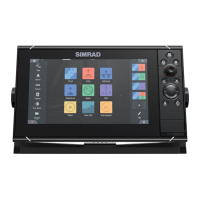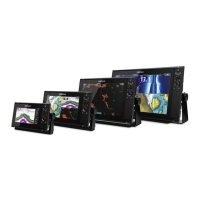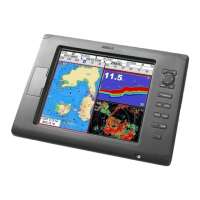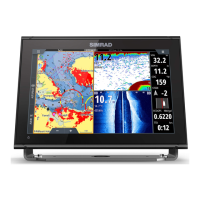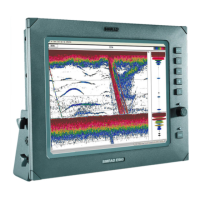2. Activate the menu, select Guard zones, then select one of the guard zones
3. Select the shape for the zone
-
The adjustment options depends on the guard zone shape
4. Select Adjust to define the settings for the guard zone. The values can be set from the
menu or by dragging on the radar panel.
- A: Bearing, relative to the vessel heading
- B: Depth
- C: Range, relative to vessel center
- D: Width
5. Select the save option in the menu to save your settings.
When positioned, you can turn the guard zones on/off by selecting the relevant section on
the data bar.
Shape: Sector
Shape: Circle
Alarm settings
An alarm is activated when a radar target breaches the guard zone limits. You can select if
the alarm is activated when the target enters or exits the zone.
Sensitivity
The guard zone sensitivity can be adjusted to eliminate alarms for small targets.
MARPA targets
If the system includes a heading sensor, the MARPA function (Mini Automatic Radar Plotting
Aid) can be used to track up to ten radar targets.
You can set alarms to notify you if a target gets too close. Refer to "Radar settings"
on page 73.
MARPA tracking is an important tool for collision avoidance.
Ú
Note: MARPA requires heading data for both the radar and the NSS evo2.
MARPA target symbols
The system uses the target symbols shown below.
Acquiring MARPA target. Typically it takes up to 10 full rotations of the scanner.
Tracking MARPA target, not moving or at anchor.
Tracking and safe MARPA target with extension lines.
Dangerous MARPA target.
A target is defined as dangerous when it enters the guard zone defined on the
radar panel.
When no signals have been received within a time limit a target will be defined
as lost.
The target symbol represents the last valid position of the target before the
reception of data was lost.
Selected MARPA target, activated by positioning the cursor on the target icon.
The target returns to the default target symbol when the cursor is removed.
72
Radar | NSS evo2 Operator Manual
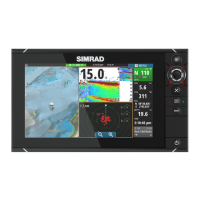
